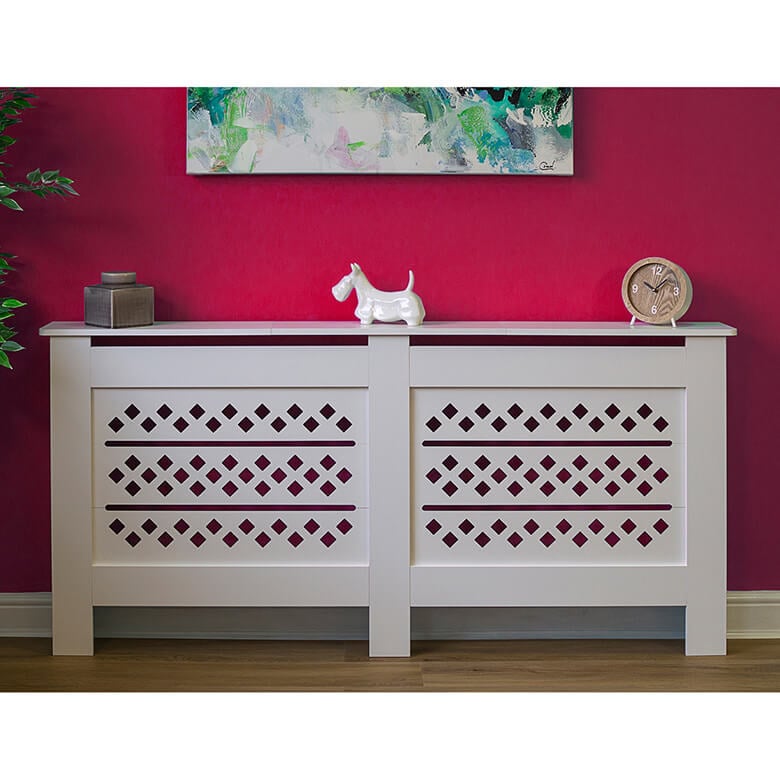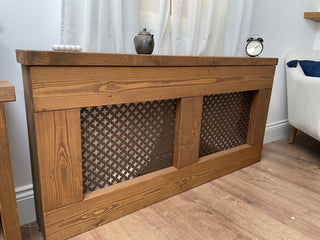DIY Tips for Installing a Radiator Cover effortlessly
DIY Tips for Installing a Radiator Cover effortlessly
Blog Article
Radiator Covers: Comprehending Products, Layouts, and Benefits
Radiator covers serve both useful and aesthetic functions within a home, offering a variety of products such as wood, metal, and MDF to suit numerous style preferences. As designs evolveâEUR" from typical to contemporaryâEUR" these covers not just enhance the aesthetic charm of a space yet likewise add to security and energy performance. Nevertheless, choosing the appropriate radiator cover entails comprehending the nuances of products, designs, and their linked benefits. This exploration elevates important concerns concerning exactly how these components integrate right into your living atmosphere and what factors to consider ought to lead your choice procedure.
Kinds of Materials


Wooden covers, often crafted from hardwoods such as oak or maple, give a traditional, cozy appearance that matches traditional interiors. Their durability and capability to be tarnished or painted add to their versatility. Metal covers, commonly made from steel or aluminum, are favored for their effectiveness and modern look, often featuring smooth lines that boost modern spaces.
MDF, a produced wood item, is preferred for its cost-effectiveness and simplicity of modification. It can be repainted or completed to match existing decoration while using a smooth surface area. Plastic covers, while less typical, are resistant and lightweight to wetness, making them suitable for moist settings.
Inevitably, the option of product for a radiator cover ought to line up with the home owner's style preferences, useful requirements, and the particular environment where the cover will be installed. Each material offers a distinct character, ensuring that there is an option to suit every taste and setup.
Popular Layout Styles
Stressing visual charm, prominent design styles for radiator covers reflect a range of preferences and interior decoration patterns. Standard styles typically feature intricate woodwork and ornate describing, making them appropriate for traditional or vintage-inspired interiors. These covers typically include sculpted elements, giving a cozy and inviting feel to any kind of space.
On the other hand, modern layouts focus on minimalist aesthetics, identified by clean lines and understated style. Products such as metal or streamlined wood with a smooth finish are frequently utilized, allowing these covers to mix perfectly right into contemporary spaces. Industrial designs, on the other hand, welcome resources like revealed metal and concrete, including a strong statement to loft space or urban setups.
For those seeking a special touch, bespoke designs use customization choices that satisfy individual preferences, making it possible for property owners to choose shades, patterns, and products that complement their decoration. In addition, farmhouse-style covers integrate rustic aspects, including troubled wood and basic kinds that stimulate a comfortable, nation beauty.
Advantages of Radiator Covers
Radiator covers not only enhance the aesthetic allure of an area but likewise use numerous practical benefits that make them a beneficial enhancement to any kind of home. Among the key advantages is safety, especially in families with youngsters or pets. Covers decrease the danger of burns from warm radiator surface areas, making certain a more secure environment.
Additionally, radiator covers can improve energy effectiveness. By routing warm right into the room as opposed to permitting it to escape, they aid preserve a regular temperature, decreasing home heating costs gradually. This is here specifically valuable in older homes where radiator systems might be less reliable.
An additional remarkable benefit is sound reduction. Radiators can often produce undesirable noises during procedure, and covers can aid stifle these sounds, adding to a much more tranquil living space. Radiator covers can be functional, providing added storage or display room, consequently taking full advantage of the utility of often-overlooked locations.
Finally, they can safeguard radiators from dirt and debris, which can hinder performance and boost maintenance requirements. With these combined advantages, radiator covers become a practical option for enhancing both the capability and style of any kind of home atmosphere.
Installation Factors To Consider
Installing radiator covers needs careful factor to consider to ensure both performance and safety (Radiator cover). Examine the measurements of your radiator and the surrounding area to make certain a proper fit. Exact measurements are vital; an uncomfortable cover can obstruct warm flow or produce safety and security risks
Following, review the material of the cover. While timber supplies visual allure, metal choices may give much better resilience and warm resistance. Consider the weight of the cover also; larger covers may need added support or reinforcements to stay clear of drooping or damages in time.
Air flow is an additional crucial element. Covers have to include adequate try here air flow to avoid getting too hot and maintain reliable heating. Search for styles with slats or openings that permit heat to circulate without this hyperlink obstruction.
Furthermore, make certain that the cover is securely installed to protect against accidents, particularly in homes with pet dogs or children. Radiator cover. It's recommended to comply with the producer's setup standards very closely and, if required, seek advice from a specialist for intricate installations
Maintenance and Care Tips
Proper maintenance of radiator covers is important for ensuring their longevity and optimum performance. For painted or timber covers, think about an ideal gloss or protective finishing to preserve their appearance.
Inspect the covers regularly for indications of wear or damage, such as cracks or peeling off paint. Resolving these problems quickly can stop additional wear and tear. Make sure that the covers are safely secured and inspect for any type of loosened screws or installations, as resonances from the radiator can loosen them in time.
In cooler months, stay clear of putting hefty items or attractive products in addition to the radiator covers, as this can restrain heat circulation and create unneeded anxiety to the framework. Think about seasonal upkeep by removing the covers for extensive cleansing and inspection during warmer months when the home heating system is non-active. Adopting these basic treatment tips will improve the efficiency and visual appeal of your radiator covers, ensuring they serve their function properly for years to come.

Final Thought
In summary, radiator covers offer as functional and aesthetic enhancements to domestic rooms. Careful consideration of setup and upkeep more ensures the durability and performance of radiator covers in any kind of home environment.
Radiator covers serve both practical and visual purposes within a home, providing a variety of products such as steel, mdf, and wood to suit various design preferences. Selecting the ideal radiator cover includes recognizing the subtleties of products, layouts, and their associated advantages.Emphasizing aesthetic appeal, popular design styles for radiator covers reflect a range of tastes and indoor layout fads.Radiator covers not just boost the visual allure of a space however likewise use a number of functional benefits that make them a beneficial addition to any home. Consider the weight of the cover as well; heavier covers might call for added assistance or reinforcements to avoid sagging or damages over time.
Report this page